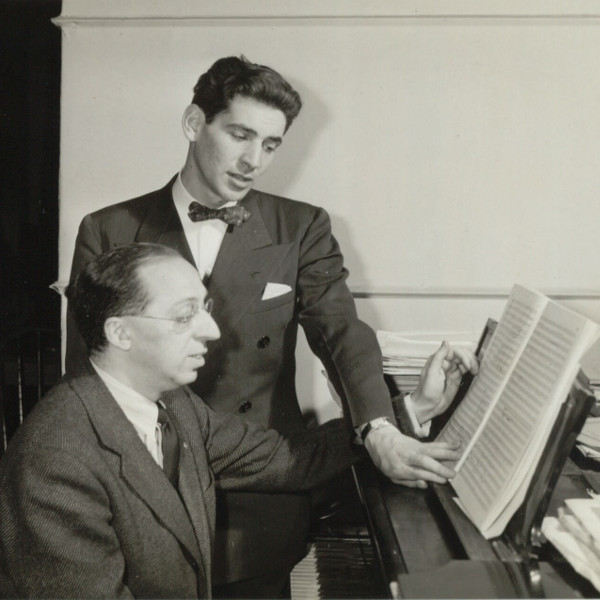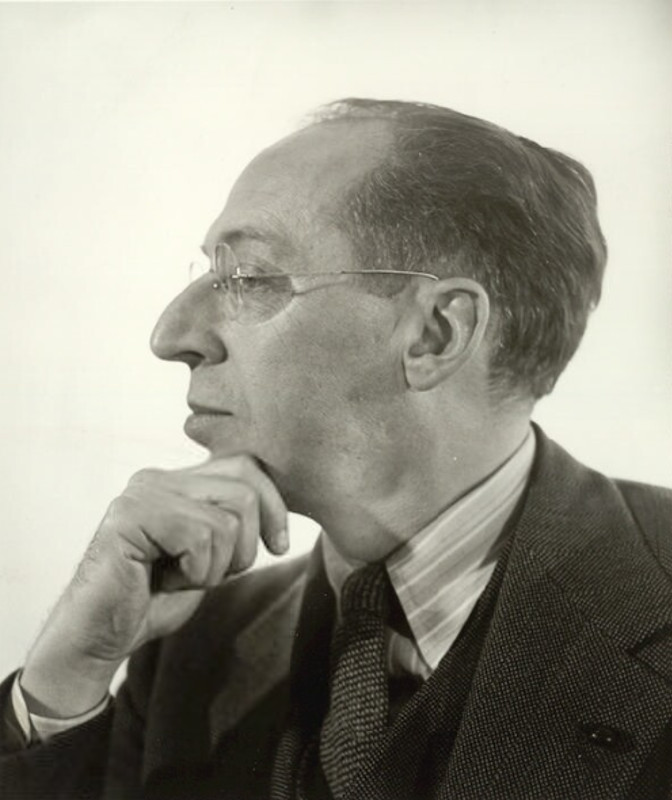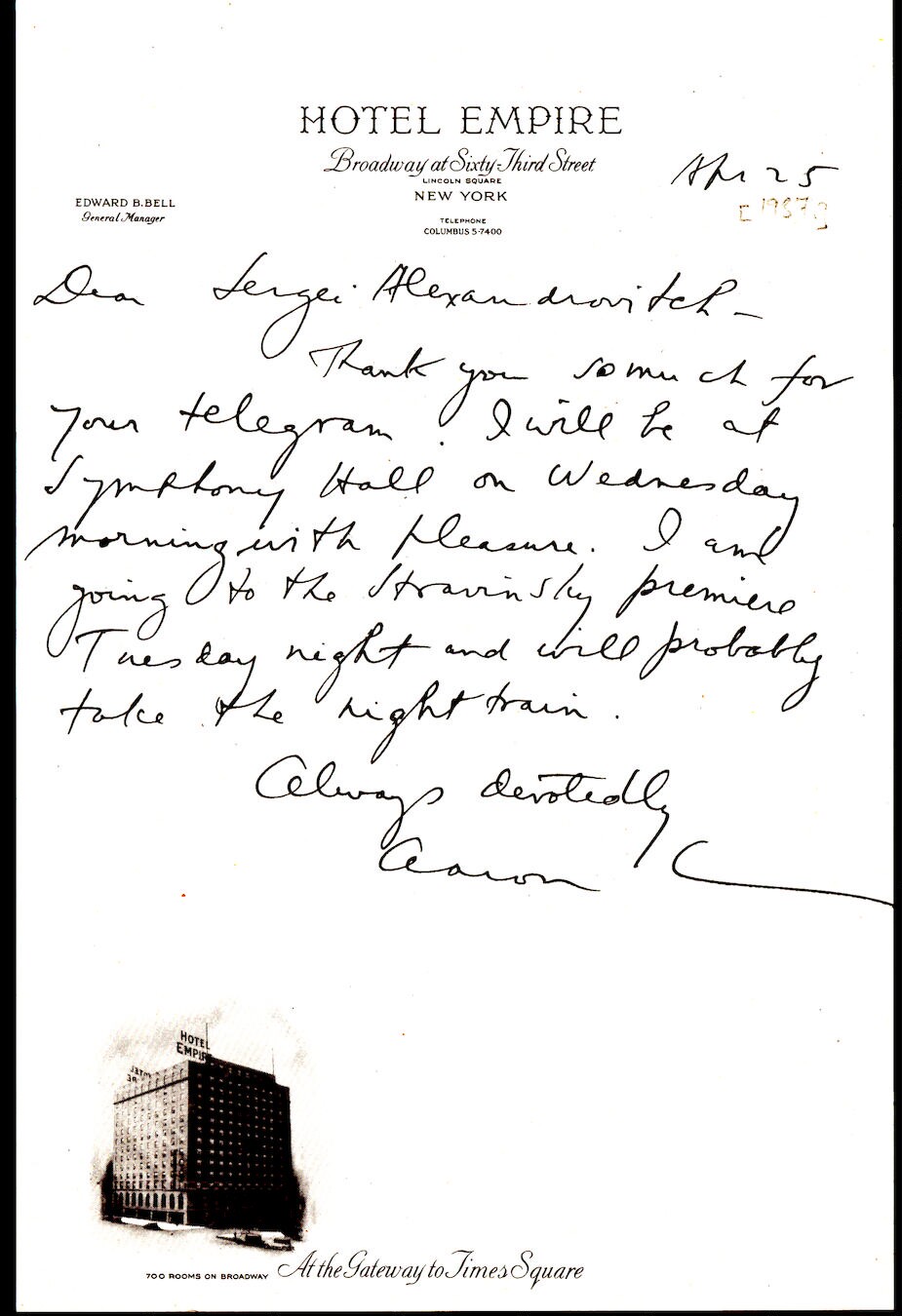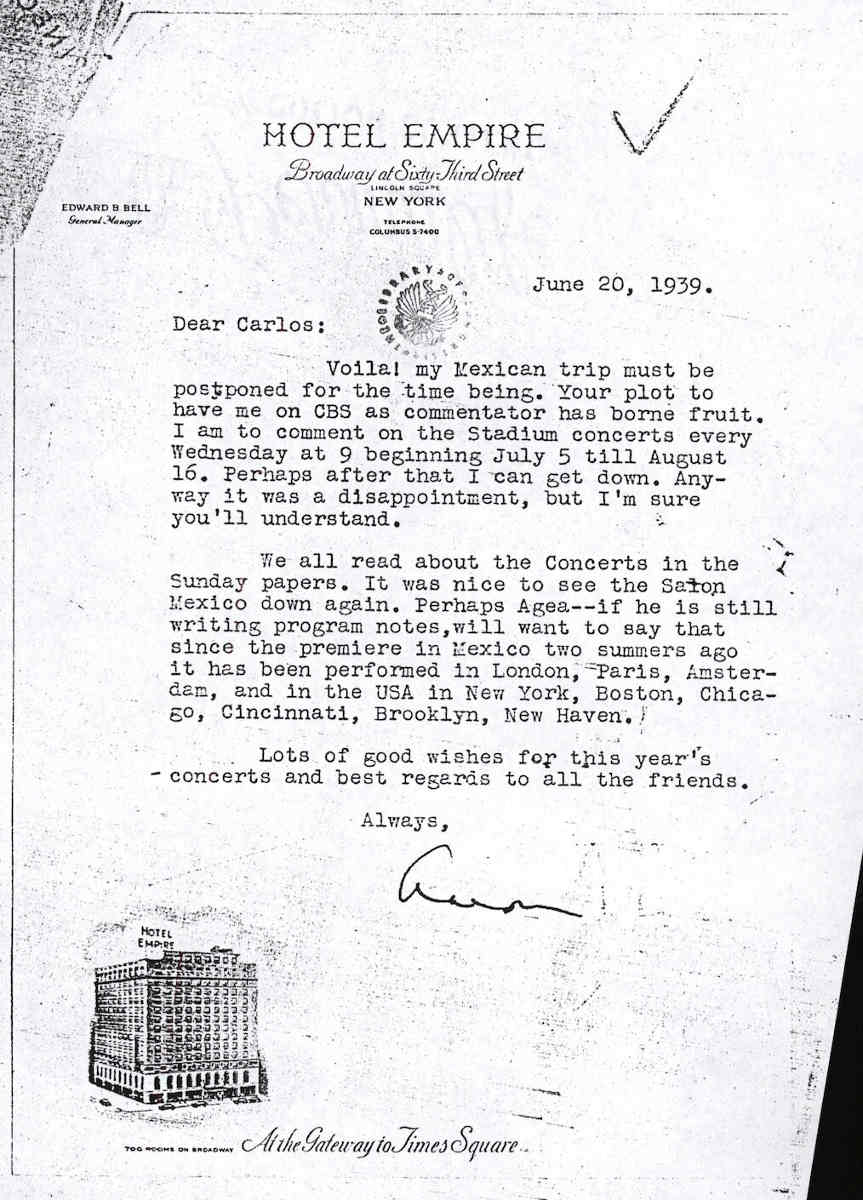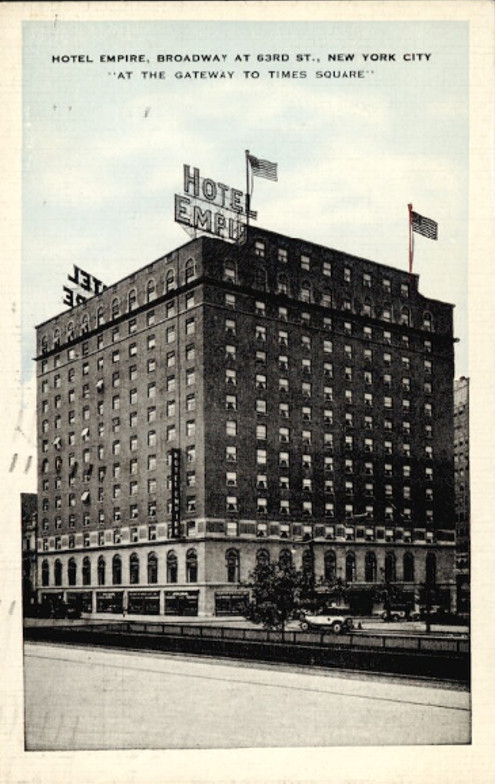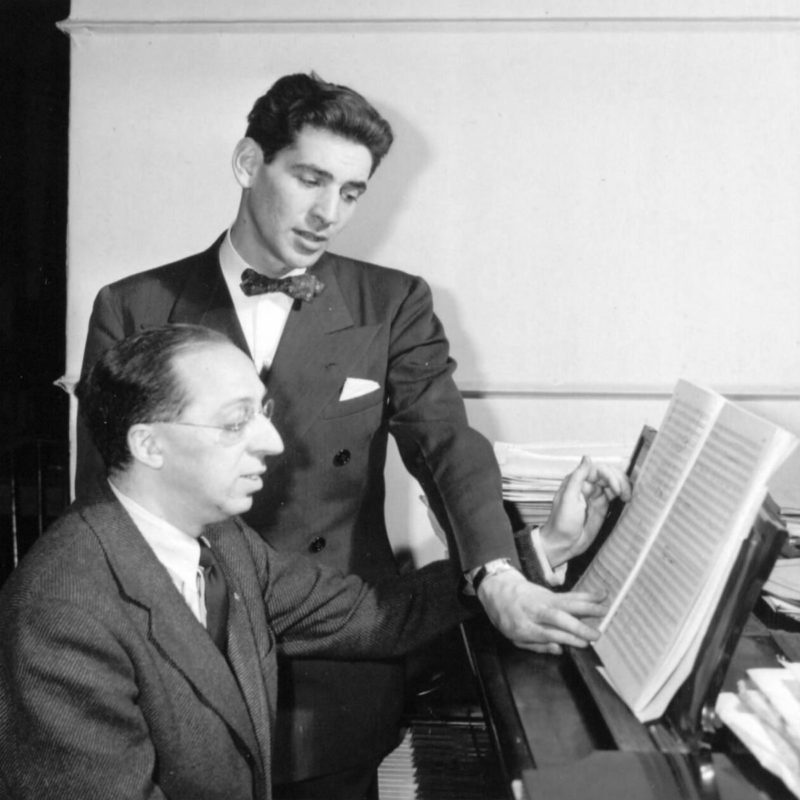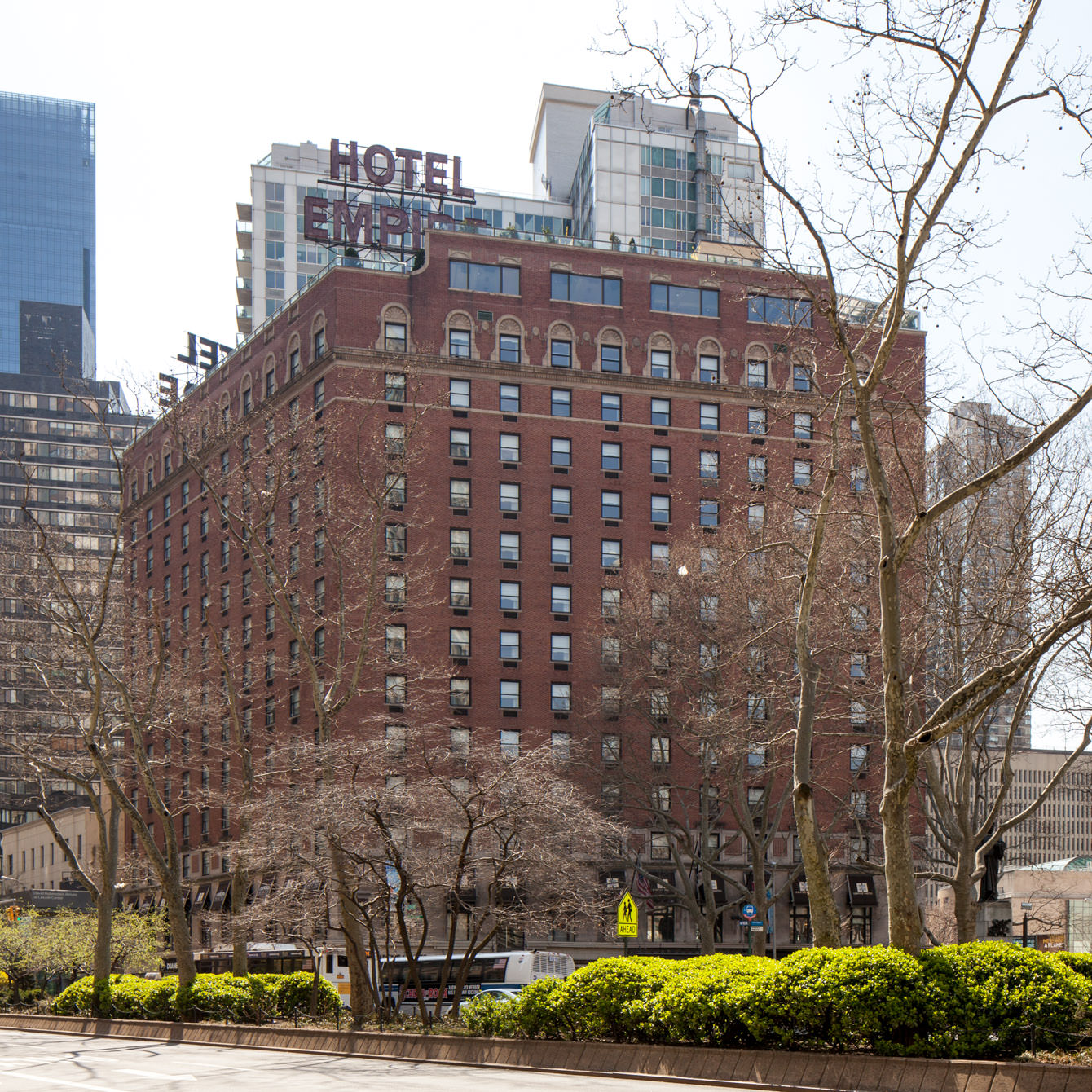
Aaron Copland Residence at the Hotel Empire
overview
Composer Aaron Copland – one of the most celebrated figures in classical music – lived in the Hotel Empire from 1936 to 1947 during the height of his career.
While here, he wrote a number of beloved works, including Fanfare for the Common Man and Appalachian Spring, and helped found organizations that promoted the development of American classical music.
History
Brooklyn-born Aaron Copland (1900-1990), known as the “Dean of American Music,” was one of the most influential and popular figures of 20th-century classical music. He grew up in an apartment at 628 Washington Avenue (demolished) in Prospect Heights, Brooklyn, and heard his first symphony at the Brooklyn Academy of Music (BAM) when he was 16.
In between extensive travels abroad, Copland lived in a number of Manhattan apartments, including his first at 135 West 74th Street from 1924 to 1926. His most significant city residence was a modest tenth-floor studio – furnished with a piano – at the Hotel Empire from 1936 to 1947. He also rented and worked in a nearby loft at 113 West 63rd Street (demolished for Lincoln Center).
During this incredibly prolific period, Copland completed several important works, some of which are among the cornerstones of 20th-century American music. A selection of compositions completed while in residence at the Hotel Empire include Billy the Kid (1938), Fanfare for the Common Man (1942), Lincoln Portrait (1942), Rodeo (1942), Appalachian Spring (1944), and Symphony No. 3 (1944-46). Copland was given New York Music Critics Circle Awards for the latter two works; Appalachian Spring, composed for choreographer Martha Graham’s ballet in 1944, also earned him a Pulitzer Prize in Music.
Mr. Copland touched a chord in the American psyche reached by no other classical musician this country has produced.
In addition to his work, he was a mentor to many gay composers, including Leonard Bernstein in the late 1930s and early 1940s. The two were briefly lovers.
In 1938, Copland helped establish the American Composers Alliance – and was its president from 1939 to 1945 – to promote and publish American contemporary classical music. Today it is the oldest national organization of its kind. He also co-founded the American Music Center in 1939; its collection of music scores was donated to the New York Public Library for the Performing Arts in 2001.
Biographer Howard Pollack notes that Copland was one of the few composers of his stature to live openly and travel with his lovers, who tended to be younger artists. His most enduring relationship was with photographer Victor Kraft, though he would come and go in Copland’s life.
Copland lived the last 30 years of his life in a house in Cortlandt, New York. In 2008, the home was designated a National Historic Landmark for its association with the celebrated composer.
Entry by Amanda Davis, project manager (March 2017).
NOTE: Names above in bold indicate LGBT people.
Building Information
- Architect or Builder: Frederic I. Merrick
- Year Built: 1922
Sources
“Aaron Copland: Timeline of a Musical Life,” Aaron Copland House, bit.ly/1ua8IeL.
Aaron Copland, and Elizabeth B. Crist and Wayne Shirley, eds., The Selected Correspondence of Aaron Copland (New Canaan: Yale University Press, 2008).
Carol J. Oja and Judith Tick, eds., Aaron Copland and His World (Princeton: Princeton University Press, 2005).
Howard Pollack, Aaron Copland: The Life & Work of an Uncommon Man (New York: Henry Holt and Company, 1999).
John Rockwell, “Copland, Dean of American Music, Dies at 90,” The New York Times, December 3, 1990, 1. [source of pull quote]
Do you have more information about this site?
This project is enriched by your participation! Do you have your own images of this site? Or a story to share? Would you like to suggest a different historic site?
